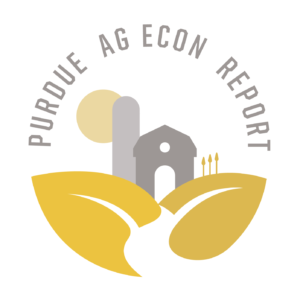Milk Prices Hold Steady: Lower Feed Prices Boost Margins
December 23, 2013
PAER-2013-14
Mike Schutz, Professor of Animal Sciences; Nicole Olynk Widmar, Assistant Professor
Milk prices have been unusually stable. December 2013 Class I base milk price at $22.57 was up just 17 cents from November 2013 and down $1.02 from December 2012 (Federal Order 33 Advanced Price Bulletin, 2013). The low price in June 2013 at $17.44 indicated the most stable calendar year for milk prices since Federal Order Reform in 2000.
While reasonably stable milk and dairy product prices were certainly welcomed by dairy farmers in 2013, high feed costs still resulted in tight margins. A large corn supply in the Eastern Corn Belt, along with moderating demand for ethanol production, have driven down feed prices, though soybean meal remains relatively expensive. According to USDA Economic Research Service for October 2013, average cost of production was $29.81 per hundredweight, compared to $27.95 in October 2012. The increase of $1.86 was almost entirely due to increased price of purchased feeds. However, it should be noted that the most recent October costs do not yet reflect decreased corn prices. It is too early to be very certain how much impact declining corn prices will have on total milk production since other feed prices have not moderated as much. Numerous reports from around Indiana have expressed concern that the 2013 corn silage crop is not supporting as high of milk yield levels as the 2012 crop. Until the crop has an opportunity to fully ferment, it is unclear whether milk per cow may be impacted.
Increased exports in 2013 exceeded the $5 billion forecast because of stronger international prices and production stress in New Zealand and Australia. Improved production will increase global competition and leave it difficult to match the record-breaking year of 2013 for US dairy exports. According to the USDA, total growth in world trade is expected to be off 3.5% in 2014 relative to 2013. Dairy product imports are at $3.1 billion and cheese imports are at $1.2 billion for 2013, while exports are projected at $5.8 billion for 2013 and forecast at $5.6 billion.
Somewhat softer cull cow prices combined with still high feed prices kept culling levels historically strong, but off of the record high levels of 2012 with reasonable amounts of forage early in the year. USDA analyst expect a very small U.S. heard expansion given lower feed prices. Feed prices, including both grain (especially soybean meal) and forage quality and prices, are playing a vital part in the balancing act that dairy producers are attempting. High quality feed from the 2012 corn silage crop and relatively mild summer temperatures increased pregnancy rates for cows going into winter so that more cows will be closer to peak milk production, which could more than offset losses from potentially lower quality feeds. As of November 15, Class III milk prices were expected to average $18.55 for the remainder of 2013, and $17.35 for the first 6 months of 2013. If exports remain strong, Class IV, driven by milk powder, will set the price for Class I. Class IV prices are forecast at $20.15 for the remainder of 2013 and $19.02 for the first 6 months of 2014, resulting in mailbox milk prices less than typical costs of production for many dairy farms.
As expected, dairy policy as part of the next farm bill remains murky”. At present, attention is again focused on a concern about returning to parity prices defined in the post-depression era legislation. Last year Congress simply extended the present farm bill, but even that solution seems less likely this year. The entire dairy industry recognizes that the marketing chaos that would result from a near doubling of the milk price would be unwise in the long run. The Milk Income loss Contract (MILC) program extended by Congress into 2013, resulted in payments early in the year, with a maximum of $0.75 per hundredweight in March 2013. Even if the MILC program were to be extended in the absence of a new farm bill, no payments are expected through at least the first 6 months of 2014 because of stable milk prices and lower feed costs. Passage of a new farm bill with supply management and margin protection policies, which may eventually stabilize milk prices, could potentially change price forecasts in the short run.
